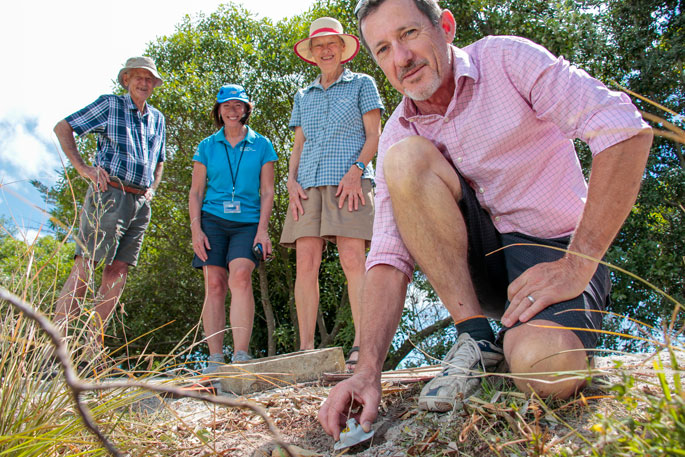The red-eared slider turtle is one of the worst invasive species, and there's concern it's establishing a claw-hold in our waterways.
This week, a scientist, a bio-security officer and two renowned conservationists stand on a dusty, sun baked track in a suburban Tauranga backwater.
They're earnestly discussing a potential environmental calamity. And Goldilocks.
That's Goldilocks of 19th century fairytale fame who doesn't like her porridge too hot, nor too cold, but just right.
But this is more to do with the Goldilocks principal, or Goldilocks zone, as it pertains to the breeding habits of the red-eared slider in Carmichael Reserve rather than common-or-garden variety porridge.
'The sex development of turtle juveniles is temperature dependent,” explains scientist Dr Nick Ling of the University of Waikato. And there's the connection - not too hot, not too cold. Just right.
It was the talk of turtles that piqued the biologist's interest and lured him across the Kaimai Range to the Carmichael wetlands at the foot of Bellevue. 'One of our staff has a property at Cook's Beach and they have had a local population of turtles lay two years in a row,” he says.
Now the scientist, the bio-security officer and the two renowned conservationists are about to excavate a red-earned slider nest right here in our own backyard.
'For those of us interested in the New Zealand environment, having any exotic animal in the wild that has potential to cause harm is certainly of concern,” adds Dr Ling.
'They eat anything they can grab,” says Dr Ling. That's a menu of fish, small lizards, amphibians – even native plants - and, as the scientist has observed, they can also catch birds.
'If a bird – any small bird - perches on a log to get a drink, the turtle will launch itself out of the water, grab them by the leg and drag them under.”
In the fine gravel at the side of a busy walking and cycling track at the reserve, conservationist Basil Graeme is scratching away gingerly. The turtle wasn't concerned about the best address, more an exposed site in the full glare of the sun with a nice warm ground temperature. Basil gets just a few centimeters down when he encounters a clutch of turtle eggs.
'I think we should be concerned about what we're see today,” says the scientist. 'This is an exotic pet that we need to take a serious look at.”
 A turtle embryo.
A turtle embryo.
From The Weekend Sun story regarding a reported sighting a few weeks ago, to photographic evidence of at least one red-eared slider in Carmichael Reserve the following week, there's now proof of a breeding population.
'We know from an egg removed so far that they are viable,” says Basil. 'They are not unfertilised eggs, and they do have turtle embryos in there.”
Which bring us back to porridge and Goldilocks. Dr Nick Ling puts a temperature logger in beside the eggs to monitor the site, to see whether temperatures get up to the Goldilocks zone where, potentially, females are produced.
'Below 28 degrees you only get male turtles,” he says. 'But from about 28-to-32 degrees, you get a combination of males and females. Above that, only females. The Goldilocks zone - not too hot and not too cold - is 28.5 degrees.”
With a long, hot and dry summer, there have been many days when the air temperature has risen to 30 degrees and above. 'If the ground temperatures are getting up to those levels then we have serious concerns,” says Dr Ling.
It seems many more females could be added to the breeding population, but not from this nest.
'We will monitor the nest,” says Dr Ling, 'to see if the temperature gets up to the Goldilocks zone where you might potentially see females produced.”
Prior to hatching, the eggs will be removed and euthanised. Placing them in a fridge sees the embryos lapse into a state of permanent hibernation.
Next week, what do we do about the turtles? In a country with no native species, do they have a place here?



0 comments
Leave a Comment
You must be logged in to make a comment.